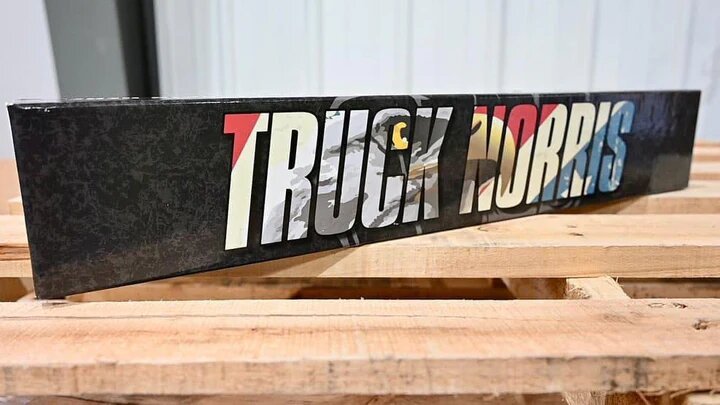Maximize Performance: How to Install a Truck Norris Camshaft

If you’re looking to maximize the performance of your truck, upgrading to a Truck Norris Camshaft is a great place to start. This modification is renowned for its ability to enhance horsepower, torque, and overall engine efficiency. Whether you’re an experienced mechanic or a DIY enthusiast, this guide will walk you through the process of installing this modification in easy-to-understand steps.
What is a Truck Norris Camshaft?
This modification is designed specifically for truck engines, providing a significant boost in performance. Named humorously after the tough and powerful Chuck Norris, this camshaft lives up to its name by offering impressive durability and power gains. It’s crafted to improve the airflow in the engine, which translates to better combustion, more power, and improved fuel efficiency.
Tools and Materials Needed
Check that you have the required equipment and supplies before starting the installation:
- Truck Norris Camshaft
- Basic hand tools (wrenches, sockets, screwdrivers)
- Torque wrench
- Engine oil
- Gasket set
- RTV silicone
- Timing light
- Harmonic balancer puller
- Camshaft lube
- Shop towels
Preparation
1. Safety First: Always work in a well-ventilated area and wear safety glasses and gloves.
2. Disconnect the Battery: This prevents any accidental electrical shorts or sparks.
3. Drain the Coolant and Oil: To avoid any spills, drain the coolant and oil from the engine.
4. Remove Engine Components: You’ll need to remove several components to access the camshaft, including the air intake, radiator, water pump, valve covers, and timing cover. Label each part and store them safely.
Removing the Old Camshaft
1. Align the Timing Marks: Rotate the crankshaft to align the timing marks on the harmonic balancer and the camshaft gear.
2. Remove the Timing Chain: Once the marks are aligned, remove the timing chain.
3. Remove the Lifters: Carefully remove the lifters, keeping them in order as they will need to go back to the same locations.
4. Remove the Camshaft Gear: Unbolt and remove the camshaft gear.
5. Extract the Camshaft: Gently slide the old camshaft out of the engine block, being careful not to damage the cam bearings.
Installing the Truck Norris Camshaft
1. Lubricate the Camshaft: Apply a generous amount of camshaft lube to the new Truck Norris Camshaft. This will protect it during the initial startup.
2. Insert the Camshaft: Carefully slide the camshaft into the engine block. Take your time and ensure it’s aligned correctly.
3. Reinstall the Camshaft Gear: Bolt the camshaft gear back in place, ensuring it’s properly aligned with the timing marks.
4. Separate the Lifters: Place the lifters back in their original positions. If you’re installing new lifters, make sure to lubricate them properly.
5. Reinstall the Timing Chain: Put the timing chain back on, ensuring the timing marks are still aligned.
6. Check the Endplay: Measure the camshaft endplay and ensure it falls within the manufacturer’s specifications.
Reassembling the Engine
1. Install the Timing Cover: Apply RTV silicone to the timing cover gasket and reinstall the timing cover.
2. Reinstall the Water Pump and Radiator: Reattach the water pump and radiator, ensuring all connections are secure.
3. Replace the Valve Covers: Install new gaskets if necessary and reattach the valve covers.
4. Reconnect the Air Intake: Reinstall the air intake and any other components you removed earlier.
Final Steps
1. Refill the Coolant and Oil: Top off the coolant and refill the engine with fresh oil.
2. Reconnect the Battery: Reattach the battery terminals.
3. Prime the Oil System: Before starting the engine, prime the oil system to ensure the new camshaft is properly lubricated.
4. Start the Engine: Turn on the engine and listen for any unusual noises. Give it a few minutes of idle time to move the oil around.
5. Check the Timing: Use a timing light to check and adjust the ignition timing if necessary.
Post-Installation Tips
1. Break-In Period: Follow the manufacturer’s recommendations for breaking in the new camshaft. Typically, this involves running the engine at a specific RPM for a set period of time.
2. Monitor Engine Performance: Keep an eye on the engine’s performance over the next few hundred miles. Look out for any issues and address them promptly.
3. Regular Maintenance: Regular oil changes and maintenance checks are crucial to keeping your engine running smoothly with the new camshaft.
Benefits of the Truck Norris Camshaft
Installing a Truck Norris Camshaft offers several benefits, including:
- Increased Horsepower: Improved airflow leads to more efficient combustion and more power.
- Enhanced Torque: You’ll notice better low-end torque, making your truck more responsive and powerful.
- Improved Fuel Efficiency: With better combustion efficiency, your truck may also see improved fuel economy.
- Durability: This modification is built to last, providing long-term reliability.
Summary
Installing a Truck Norris Camshaft can significantly boost your truck’s performance. This blog guides you through the process, from preparation to reassembly, using simple steps. With the right tools and careful execution, you’ll increase horsepower, torque, and fuel efficiency. Key steps include removing the old camshaft, lubricating and inserting the new one, and reassembling engine components. Follow the manufacturer’s break-in period and perform regular maintenance to ensure long-term reliability and optimal performance.



